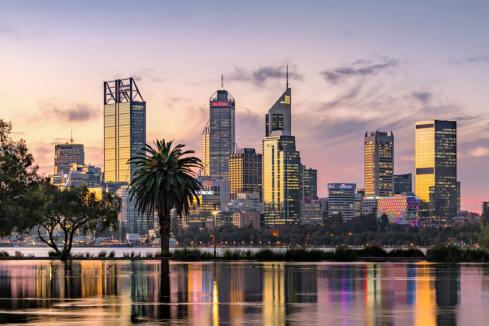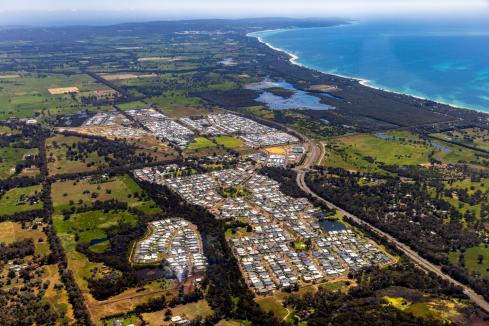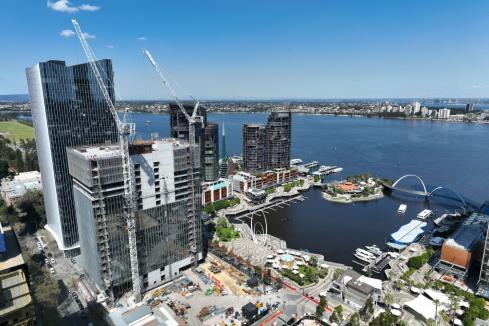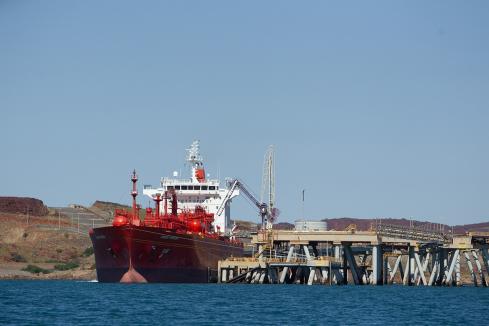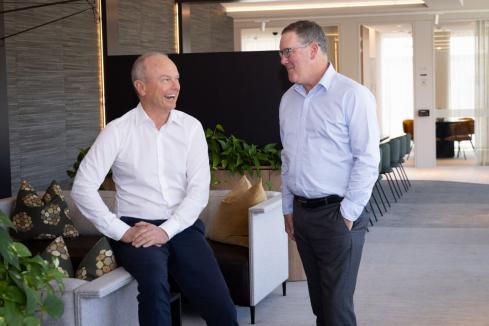Perth may have the highest office building vacancy rate nationally, but that’s done little to dampen the confidence of investors, developers and real estate agents.

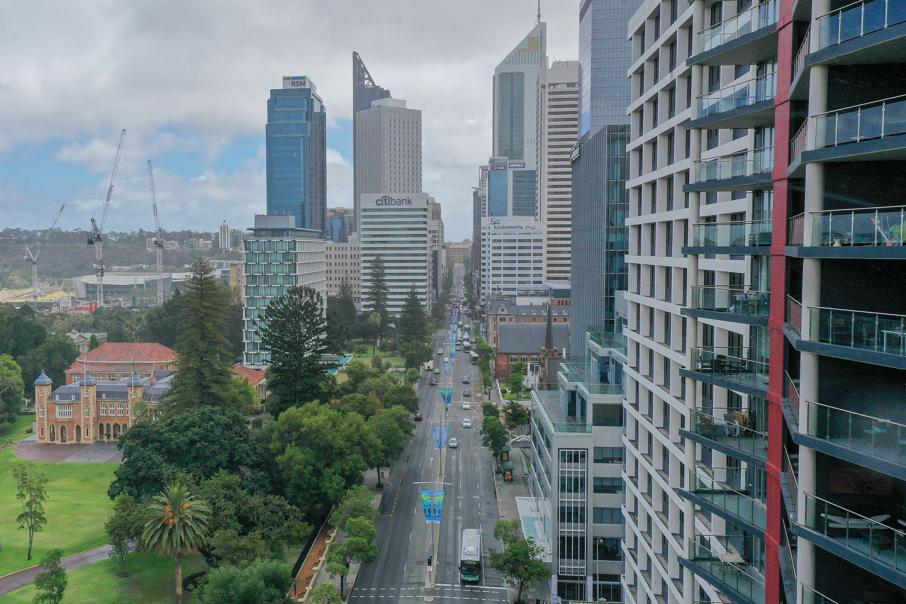
Perth's latest lockdown provided a stark reminder to employers and office landlords of the changing nature of work, where staff have the ability to operate remotely at short notice.
But the shift to working from home comes with caveats.
Some people find it difficult to remain motivated and productive in a home environment, while others can’t juggle work and family needs (such as children home from school in lockdown).
Many workers find the lack of socialisation a major drawback of WFH, with this lack of interaction potentially affecting staff morale.
From an employers’ perspective, the inability to monitor staff is a frustration, despite several studies showing an increase in worker productivity in some sectors.
(view a PDF version of this special report)
The property industry is banking on the downsides of remote working to overshadow the upsides in the long run.
While the pandemic has shown the office is part of an asset class that’s certainly not immune to the whims of economic events, it has also highlighted a part of business life often taken for granted: a physical presence.
Workplace culture is a major part of that, according to Redhill Partners partner Oliver Mahé.
“We believe the office of the future has to become a destination with a purpose and will be designed with an increased focus on collaboration, with potentially more individual-style work completed from home,” Mr Mahé told Business News.
“The office of the future will form an important part of an organisation, as it will be the physical manifestation of the company’s culture.
“Rather than simply clocking in and out, we believe it will become the place of employee creativity and engagement.”
Mr Mahé’s confidence in the longevity of the office is backed by Redhill Partners’ recent $67.8 million play for a CBD office, pushing the Singapore-based private investment company up the ranks on the Business News Data & Insights list of commercial property owners, to make the top 10 (see page 34).
Redhill Partners’ recent purchase, 899-927 Hay Street, comprises a vacant 14-level office tower (previously known as Dynons Plaza and the former headquarters of Chevron), as well as three heritage buildings.
Vendor Stamford Hotels and Resorts rejected a $134 million offer for the property just over a decade ago.
Mr Mahé said buying at a cyclical low point in the Perth office market was one of the factors underpinning the group’s latest acquisition.
Another selling point was the notion that Perth was at the beginning of a rising commodities cycle, which Mr Mahé expected to increase local economic activity and demand for A-grade offices.
“We were [also] attracted to the opportunity due to the significant discount to replacement cost for a 10-year-old building, the location, and the fact that it is one of the largest contiguous vacant spaces in the market,” he said.
“Additionally, we liked that we were presented with a clean slate to get a first-mover advantage in delivering a whole building offering and office fitout to the changing tenant requirements due to COVID-19.
“We believe that once the pandemic is contained and behind us, we will see companies begin to return to the office and embrace a cultural change, look for new features in office buildings, and have refined requirements for their office fitouts.”
Mr Mahé said there had been some initial decision paralysis among prospective tenants last year, but that office leasing activity had picked up again, with Redhill Partners completing 5,000 square metres of office leasing deals in the last quarter of 2020.
“We are of the opinion that while the pendulum has swung to a desire to work from home, it will swing back in the medium term as all the intangible benefits of having the employees together in one place begins to become more apparent,” he said.

Leasing activity
Perth businesses appear to understand the benefits of being back in the office more than most, with the CBD’s occupancy rate (the percentage of staff working from the office as opposed to at home) at the end of last year the highest of all major Australian capital cities.
Early data for January 2021 from the Property Council of Australia suggests Perth’s level of office occupancy has remained high despite the recent lockdown, sitting at 66 per cent. Melbourne and Sydney reported the lowest occupancy rates in the country (31 per cent and 45 per cent, respectively).
But office vacancies remain a perennial issue for Perth.
The Property Council of Australia’s Office Market Report, released earlier this month, outlined that Perth and West Perth had the worst vacancy rates of any city or city-fringe location in the country.
In the six months to January 2021, the Perth CBD vacancy rate increased by 1.6 per cent to 20 per cent, the advent of COVID-19 unravelling some of the recovery that had started to take place in recent years.
Property Council of Australia WA executive director Sandra Brewer said office market demand had been an ongoing challenge for Perth, with the CBD having averaged a vacancy rate of 19.7 per cent since January 2016.
“We know that COVID-19 will have impacts on the way we work, especially when outbreaks occur, but the pandemic won’t last forever,” Ms Brewer told Business News.
“Business and government have a critical role to play in supporting the return to office workplaces and helping more people come back to office precincts.
“The fact remains that offices and the CBD will always remain the lifeblood of our city centres, and drivers of productivity and innovation.”
One fifth of Perth CBD office stock is now considered vacant, with buildings deemed to be of B-grade quality reporting the highest vacancy (28.8 per cent), followed by C-grade (21.6 per cent).
Meanwhile, the office vacancy rate in West Perth has remained unchanged since July 2020, sitting at 22.1 per cent, the precinct’s highest level of vacancy on record.
However, there was some positive news for Perth’s office leasing sector, according to JLL manager WA research Ronak Bhimjiani.
While headcount reductions and tenant downsizing had translated into an increase in subleasing activity across all Australian CBD office markets in the fourth quarter of 2020, Mr Bhimjiani said the impact had been less severe in Perth.
“Sublease vacancy provides a unique insight into business sentiment and its implications on demand for office space,” he said.
“Companies start subleasing space to other tenants because they just don’t need that space anymore.
“But the fact that we’ve been able to hold on to sublease vacancy at 2 per cent is a good sign, especially when you look at what’s happening across the Sydney and Melbourne markets where sublease vacancy has more than doubled.
“Our subleasing activity is ridiculously low when you consider what we’ve gone through in 2020, and reports that a lot of people working from home won’t want to come back to the office; if that was the case, you would see sublease vacancy significantly going up.”
Tenants requesting shorter-term leases and smaller floorplates was an emerging trend, Mr Bhimjiani said.
A recent survey conducted by real estate firm Knight Frank revealed 40 per cent of participants chose “we will require less space” when asked what the likely impact of COVID-19 would be on their workplace.
“Previously, on average, tenants were looking at eight-year leases, now they’re increasingly looking at three-year terms,” Mr Bhimjiani said.
“What they really want is adaptability, the ability to chop and change their space.”
That sentiment is echoed by Mark Hay Realty Group principal Mark Hay, who said the same trend was appearing at the small end of town.
“It’s quite encouraging, the activity out there from a year ago,” Mr Hay told Business News.
“I think all of us were bracing ourselves as COVID hit that we’d be in all sorts of trouble, especially when the office vacancy rate is in double digits.
“With shorter leases and smaller spaces … maybe that’s why our end of the market is happening.”
Mr Hay said he had brokered several recent deals in East Perth and Northbridge, including three-year terms for a digital marketing firm and a dance studio, as well as a one-year term for a migration firm.
He said a number of tenants approaching the end of their lease were requesting less space, rather than abandoning the office altogether.
“They may have had a 700sqm floorplate before, their lease has come up and now they’re saying, ‘We’ll go down to 300sqm, we’ll hot desk, some of our staff will work from home’ … the business world has changed,” Mr Hay said.
That appetite for flexibility and smaller space is highlighted by flexible workspace providers Liberty and Spacecubed, which added more CBD space to their portfolios in 2020.
However, it’s also worth noting WeWork shed 3,414sqm of space from its portfolio (shutting down its Northbridge premises) during the same period.
Savills WA managing director Graham Postma said besides size requirements, speculative fitouts, incentives, and a flight to quality were ongoing influences on office demand in the Perth market.
Centralisation, where firms take advantage of CBD conditions and relocate from the city fringes, was another recurring theme, he said.
“If you want to attract staff back to the office, it has to be an environment that’s attractive,” Mr Postma told Business News.
“Everyone’s hopeful the [latest] lockdown will only be a short-term blip.”
Mr Postma said enquiries and inspections throughout January had been promising, driven largely by businesses operating in the resources sector.
Government workspace requirements also have the potential to make big movements in the market, with Sheffield Property last week securing 8,000sqm of A-grade office space for the Department of Communities at 130 Stirling Street.
And earlier this year, the state government revealed plans for a new office building in West Perth to accommodate parliamentary staff (see map).
“There’s a couple of big enquiries still floating around with Bankwest, Santos and the like that have the potential to kick off a new development,” Mr Postma said.
“We could possibly see two new towers started over the course of this year when some of the larger space users make decisions on what they’re going to do long term.
“So that will be interesting to see if the stay-put option wins.”
Developments
While there are several office projects planned for the CBD, only three are under construction.
AAIG’s Capital Square project will add 25,200sqm of space to the market, due for completion in the second half of this year, with BDO believed to be one of its future tenants.
Also under construction is Chevron’s new headquarters at One The Esplanade, Elizabeth Quay, which is expected to be completed in 2023.
And Hawaiian is due to shift from its home at 235 St Georges Terrace to a new purpose-built two-storey 900sqm office off Mercantile Lane in the coming months, as part of the company’s $45 million redevelopment of the Parmelia Hilton.
“We still see the office, and most of our tenants do as well, as forming a key part of their business, it’s an attractor to get new staff,” Hawaiian general manager office buildings Richard Kilbane told Business News.
“It’s important for collaboration and career development as well. If a grad is starting their career, it’s very difficult to get ahead if you’re sitting in your study at home and don’t have any interaction with the boss or your work colleagues.
“There’s also a lot of statistics out there that people meet their partners through the office environment … so if you’re all working from home, all those things will struggle.”
Mr Kilbane said the office market had been tough for a number of years but remained an important asset class within Hawaiian’s portfolio.
“When the office market pops, it can be quite attractive in terms of its returns,” he said.
“I think the vacancy issue is a function of the fact Perth got overbuilt in 2014, when all the buildings went up at King Square … we’re still working our way through it, and what happened last year has really just set us back a few years.
“So, I can’t see speculative development happening, given where the market is at.”
Brookfield is the most active office developer in Perth.
Including One The Esplanade, the organisation has four office projects planned, among them lots five and six at Elizabeth Quay, which received development approval last year.
Brookfield regional director developments and property Nick Ozich said the company had also recently submitted an amendment to its development application for Esplanade Plaza, creating additional office space, and that it had an existing development approval for stage two of the Bishop’s See precinct.
“At a general level, Brookfield is very positive of the long-term fundamentals of the Perth office market. We’re a strong believer that there’ll be gradual improvement through the market over time,” he said.
“Premium office space is tight in Perth; if a tenant is seeking 2,000sqm or more ... it would be difficult to secure now, so new developments that are generally anchored at 75 per cent will offer additional space for smaller tenants to move into a new facility.”
Mr Ozich said Brookfield was actively promoting its planned projects in the market and remained tight-lipped about the identity of prospective tenants, with the group only talking to existing established tenants in Perth.
For any of its projects to progress to construction, however, Mr Ozich said tenant pre-commitments would need to be secured first.
“You’ve still got relatively low land costs in Perth, you’ve got capital values holding for well-located and leased assets, stable construction costs, and record-low interest rates, so it is a good time to develop,” he said.
Other significant developments in the CBD pipeline include GDI Property’s $1 billion plan for the revamp of its Mill Street complex, the group submitting a development application late last year.
Those plans include a new 33-storey tower at 1 Mill Street, and an upgrade of the existing complex at 5 Mill Street.
GDI Property also recently received approval for a timber-steel hybrid office next to its existing Westralia Square tower, which is likely to start construction in 2021.
On the CBD fringe, ABN Group will soon move into its new 9,000sqm headquarters in Leederville.
Another significant office development planned for Perth’s suburbs is the second stage of Primewest’s Prime House in Joondalup.
Last June, Primewest unveiled its $80 million plans for a 12,000sqm office building.
A Primewest spokesperson told Business News talks were under way with potential tenants but no commitments had been made, and that a formal start date wouldn’t be decided until there was a tenant secured.
“The reality is, the office market is no different to any other business, there’s going to be a bit of uncertainty for a while,” Mr Kilbane said.
“No-one really knows what the [COVID-19] vaccine is going to do.
“But the state’s got really strong fundamentals; it’s got a good solid base of resources and other forms of work.
“As long as they continue to develop mines and re-invest into the office, the sector will be strong.”
Global view
Compared to other resources-driven cities around the world, the Perth office market has been relatively steady over the past five years.
Independent property firm Y Research undertook an analysis of commodity office space across 14 global resource hubs in 2016 and again in 2021.
Perth emerged as one of the few cities on the list to have actually recorded a decrease in vacancies in five years: down from 22.1 per cent in 2016.
Y Research director Damian Stone said the strength of WA’s iron ore sector, the emergence of new growth sectors, and a limited direct impact of COVID-19 had resulted in Perth recording less market volatility between 2016 and 2021.
“Cities in North America and the UK, which have experienced, according to local market analysts, ‘a double black swan event’ of plummeting oil prices and widespread local COVID-19 infections, have seen vacancy rates [direct and sub-lease] rise dramatically in recent years,” Mr Stone told Business News.
“Resources cities have largely recorded significantly higher vacancies between 2016 and 2021.
“Cities such as Houston, Aberdeen and Edmonton have seen their vacancy rate increase by more than 7 per cent over this frame.
“Capital cities such as Singapore and Oslo, which would typically have a more diverse range of major occupiers, such as government and financial services, have seen vacancy rate tighten to under 6 per cent.”
Brazil’s Sao Paulo, an iron ore city, recorded the largest fall in office vacancies over that period, contracting from 23.6 per cent to 19 per cent.
Meanwhile, Edmonton in Canada (predominantly centred around oil and gas), reported the largest increase in office vacancies, up 9.5 per cent to 20.6 per cent as of January 2021.
Aberdeen in Scotland, and Houston in the US, both oil and gas-focused economies, have office vacancy rates above 25 per cent.
“In the years ahead, post COVID-19 changes to the economy and the nature of work will likely see Perth increase its reliance on the resources sector, particularly iron ore,” Mr Stone said.
“The six largest resources firms – BHP Billiton, Rio Tinto and FMG [iron ore], Chevron, Woodside and Shell (oil and gas) – occupy just under 20 per cent of offices in the Perth CBD.
“Moves by these companies will have a proportionally high impact on future occupancy.”
Outlook
A rise in subleasing activity and falling rents is likely to be on the horizon for the Perth CBD, according to Colliers International associate director research and urban economics Quyen Quach.
Colliers research found that, by the end of December 2020, premium-grade office base rents averaged $700/sqm, 1.4 per cent lower than the December quarter in 2019.
Average A-grade rents also decreased during that period, falling 1.7 per cent.
“The full impact this pandemic has on office space demand may take more time to flow through, [as] businesses continue to assess the longer-term impact of COVID-19 on future trading conditions and office space requirements,” Mr Quach said.
“Colliers expects more sublease space to come onto the market over the next six months as businesses continue to seek cost efficiencies.
“Following the insolvency trading moratorium, which ended on December 31 2020, it is possible that there will be increased incidences of business closures from unviable businesses, which could contribute to an increase in vacancy.
“However, there is optimism that WA’s recovering resources sector and economy will limit potential increases in the year ahead.”














